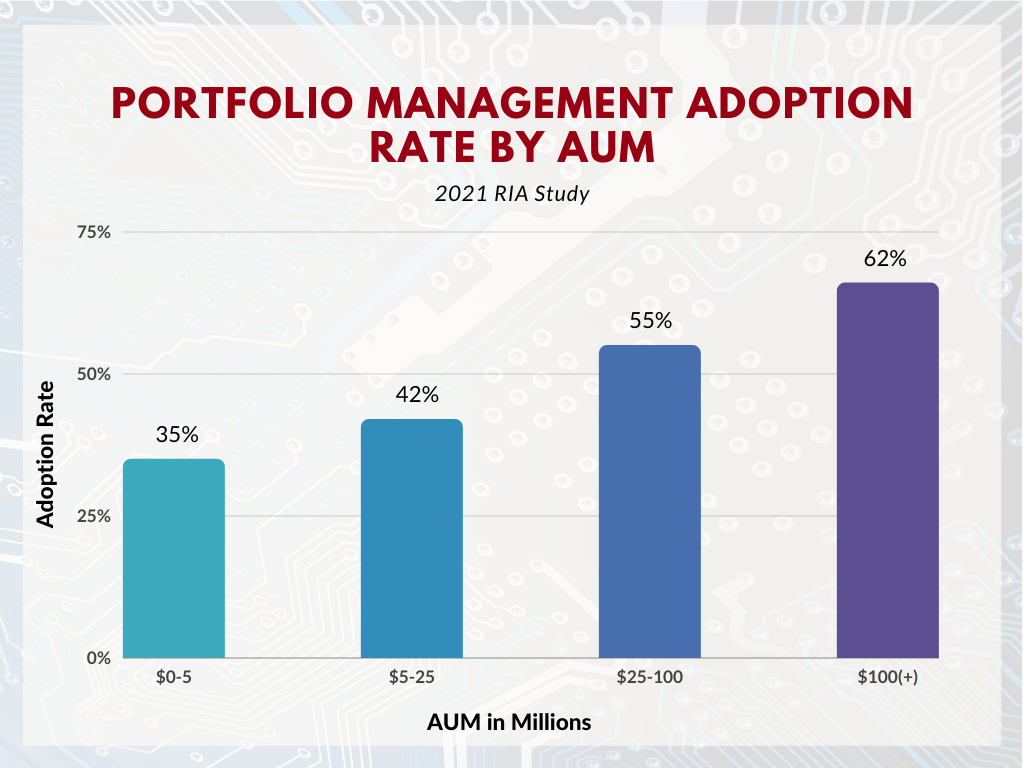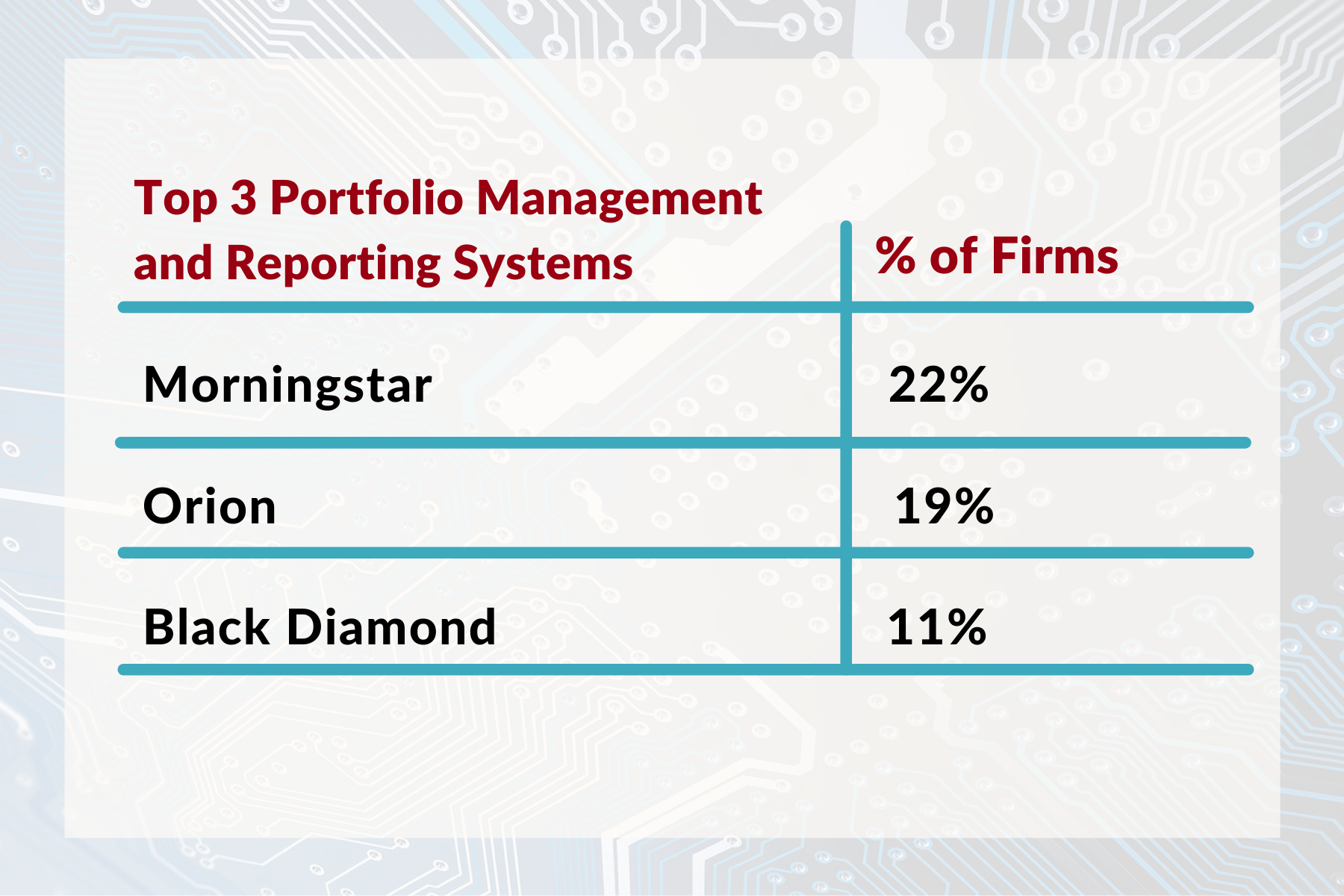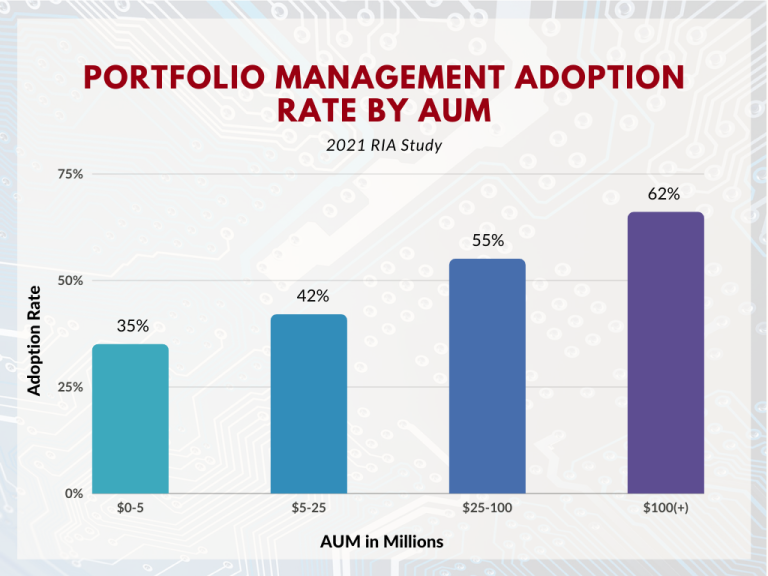The findings in this blog post come from our annual survey of over 1,800 registered investment adviser (“RIA”) firms conducted in the first quarter of 2021. This is our third blog post published from a series of analyses that explore technology adoption and usage by RIA firms. This proprietary RIA in a Box study is paired with publicly accessible data provided by the Securities and Exchange Commission (“SEC”). The goal of our annual study is to understand different options that comprise each firm characteristic, and to determine whether specific characteristics impact the growth, size, or operational efficiency of an RIA firm. Below, we will analyze the findings from our survey results in response to portfolio management and reporting (“PMR”) systems used by RIA firms.
RIA Adoption Rate of Portfolio Management and Reporting Systems
The results from our annual technology survey show 50% of RIA firms utilize portfolio management and reporting systems. Besides a slight dip in 2017, portfolio management and reporting software adoption has remained relatively stagnant in recent years. Portfolio management and reporting systems are often one of the more expensive technology solutions within an advisor’s technology stack, but the right solution can deliver a tremendous return on investment by utilizing available integrations and automated features to help enhance the client experience and streamline operations.

RIA Portfolio Management and Reporting System Adoption by Firm AUM Size
As with many technology solutions used by RIA firms, portfolio management and reporting systems generally show higher adoption rates, as a firm’s assets under management (“AUM”) increases. What we see in the data is consistent with previous years, indicating that new or emerging RIA firms, such as firms with less than $5 million in AUM, are the least likely to adopt a PMR system. We have observed that the disparity between adoption rates and AUM continues to grow year over year as adoption rates increase for firms with over $100 million in AUM and decrease for firms with under $100 million in AUM.

The Top RIA Portfolio Management and Reporting Systems
Unlike some other investment advisor technology categories such as customer relationship management (“CRM”) software or risk tolerance software, the competitive landscape of the portfolio management and reporting sector remains relatively more fragmented with no dominant market share leader. Morningstar holds the largest market share at 22% with its Office product, followed closely by Orion and Black Diamond (a division of SS&C Technologies). Although we have not observed much movement in the adoption rates of the leading portfolio management and reporting systems, Morningstar, Orion, and Black Diamond continue to improve and distance themselves from the crowded competitive landscape.
Morningstar Office has continued to grow and remain nimble by offering a wide selection of bundled offerings for small to mid-sized RIA firms. Orion and Black Diamond continue to lead the market for serving larger investment advisory firms. We continue to see a steady stream of new emerging entrants in this category and expect the innovation race to continue as technology providers continue to identify opportunities to cater to RIA firms of all sizes.
Compared to last year’s survey results, Orion’s relative market share grew most notably from 17% in 2020 to 19% in 2021. On the other hand, Morningstar’s market share fell from 25% in 2020 to 22% in 2021. Black Diamond’s market share fell slightly from 12% in 2020 to 11% in 2021.

Portfolio management and reporting solutions can often be one of the most important pieces of technology for advisors to implement to help guide clients to long-term financial success. The most challenging part is deciding which portfolio management and reporting solution is the right solution for an advisory business given the wide array of benefits and available integrations. RIA in a Box integrates with Morningstar Office, Black Diamond, and Orion to provide real-time updates on compliance and registration needs, eliminating the time-consuming demands of tedious manual entry processes.
Stay tuned for more blog posts that will focus on the core technology solutions available to investment advisory firms. In the coming weeks, we will further explore the top document storage and financial planning software solutions.
